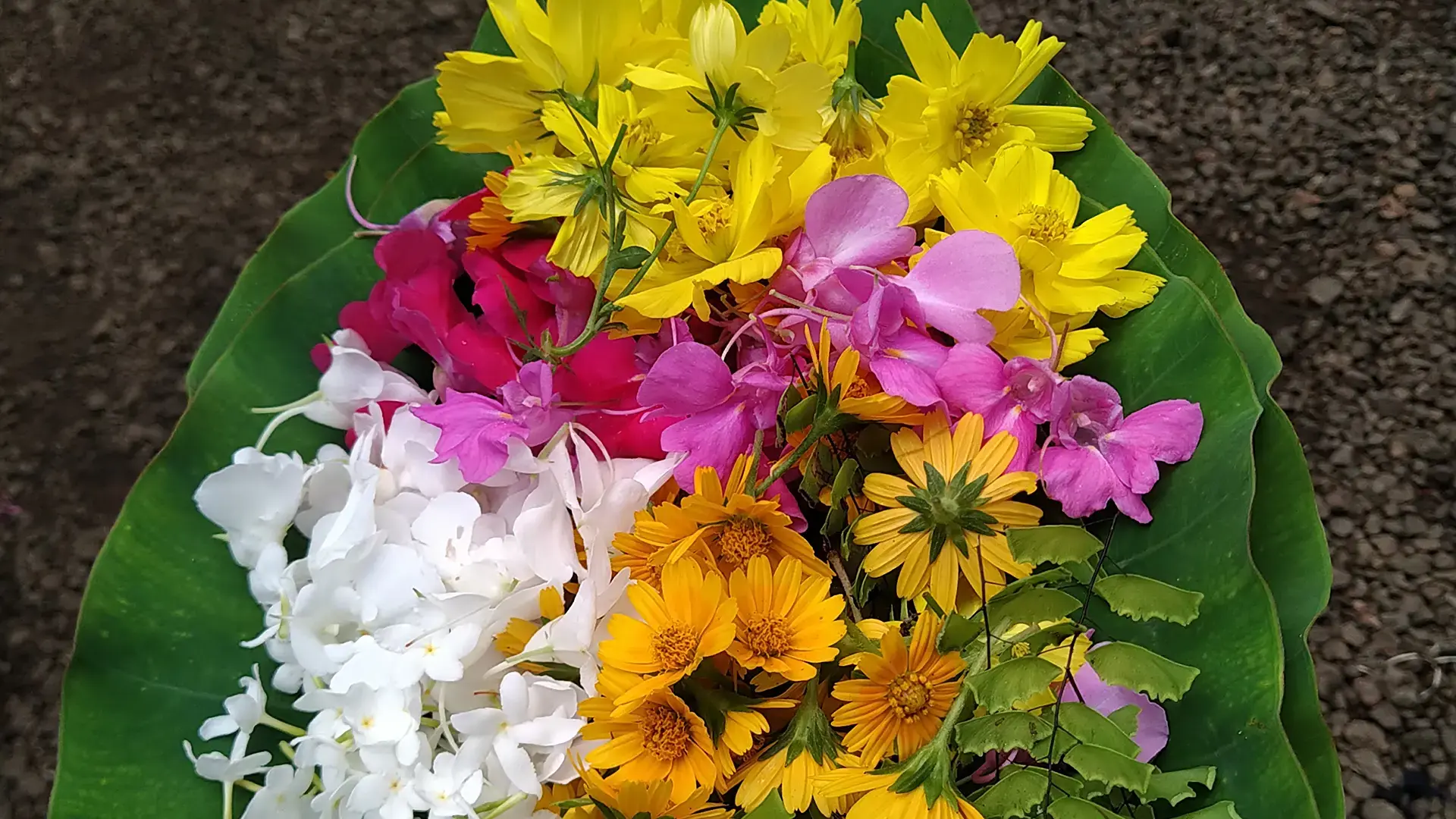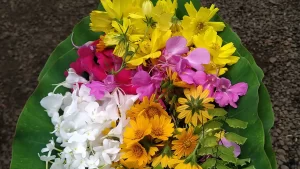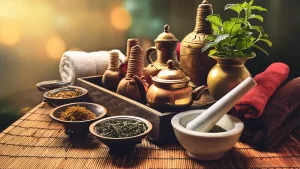Image By Haritha Gangadharan, CC BY-SA 4.0, via Wikimedia Commons
Onam is not just a festival in Kerala – it is an emotion, a celebration that binds every Malayali together regardless of religion, caste, or age. Celebrated with immense joy and cultural pride, Onam marks the homecoming of the legendary King Mahabali, under whose reign Kerala is believed to have experienced prosperity, peace, and equality. It is also Kerala’s official harvest festival, making it one of the most significant and widely celebrated occasions in the state.
The Legend of King Mahabali
The story of Onam is deeply rooted in mythology. According to Hindu beliefs, Mahabali, a generous and noble demon king, once ruled Kerala. His reign was so prosperous that even the gods grew jealous. To test his devotion, Lord Vishnu took the form of Vamana, a dwarf Brahmin. Vamana asked Mahabali for three paces of land, and the king humbly agreed. In two giant strides, Vishnu covered the earth and the heavens, leaving no space for the third step. Mahabali, true to his word, offered his own head. Vishnu then granted him permission to visit his beloved people once every year – and that annual visit is celebrated as Onam.
When is Onam Celebrated?
Onam is celebrated during the Malayalam month of Chingam (August–September). The festival lasts for 10 days, with each day holding its own importance. The first day, Atham, marks the beginning, and the grand finale comes with Thiruvonam, the most auspicious day.
Rituals and Traditions of Onam
Onam is a colorful blend of rituals, culture, and community spirit. Some of the major traditions include:
Pookkalam (Floral Carpet)
Families decorate the front yard with intricate floral rangolis, known as Pookkalam. Each day, fresh flowers are added, symbolizing prosperity and welcoming King Mahabali. These floral designs become increasingly elaborate as the festival progresses.
Onam Sadya (Feast)
A highlight of Onam is the grand vegetarian banquet called Onam Sadya, served on a banana leaf. The Sadya typically consists of more than 20–25 dishes, including rice, sambar, avial, olan, thoran, pachadi, and the famous dessert Payasam. The variety, flavors, and presentation make it a feast fit for a king.
Vallam Kali (Snake Boat Race)
Kerala’s backwaters come alive with the famous boat races, where long, beautifully decorated snake boats are rowed by hundreds of oarsmen in rhythmic unison. The races are accompanied by traditional songs (Vanchipattu) that add to the excitement.
Pulikali (Tiger Dance)
Performers paint themselves as tigers and hunters and dance to the beats of drums in the streets. This folk art, called Pulikali, is a playful and colorful spectacle that draws large crowds.
Cultural Events
Onam is also a celebration of Kerala’s rich art forms. Kathakali, Thiruvathira, Kummattikali, and Kaikottikali are performed across temples, community centers, and cultural venues. These performances highlight Kerala’s deep cultural heritage.
The Spirit of Onam
What makes Onam truly unique is its inclusive nature. People of all communities in Kerala celebrate it together, making it a symbol of unity and cultural harmony. Streets, homes, and public spaces are filled with decorations, music, and the aroma of feasts. It is a time when families reunite, communities bond, and joy is shared.
Onam Beyond Kerala
Though Onam originates from Kerala, Malayalis across the world celebrate it with equal enthusiasm. The festival brings together expatriate Malayalis, keeping them connected to their roots and traditions.
Conclusion
Onam is not merely a festival; it is a reflection of Kerala’s culture, values, and traditions. It is about remembering a golden era under King Mahabali, celebrating the abundance of the harvest, and spreading happiness. From the fragrance of fresh flowers in the Pookkalam to the delightful taste of Payasam, every element of Onam radiates warmth, joy, and togetherness.







